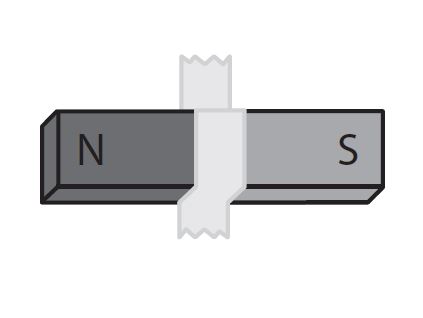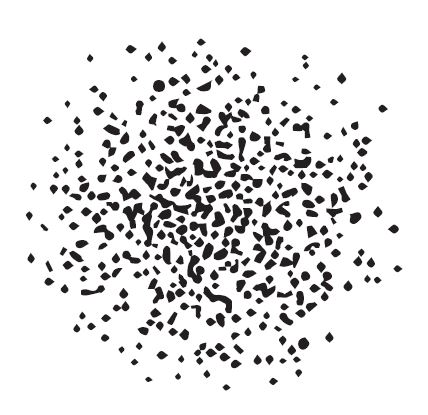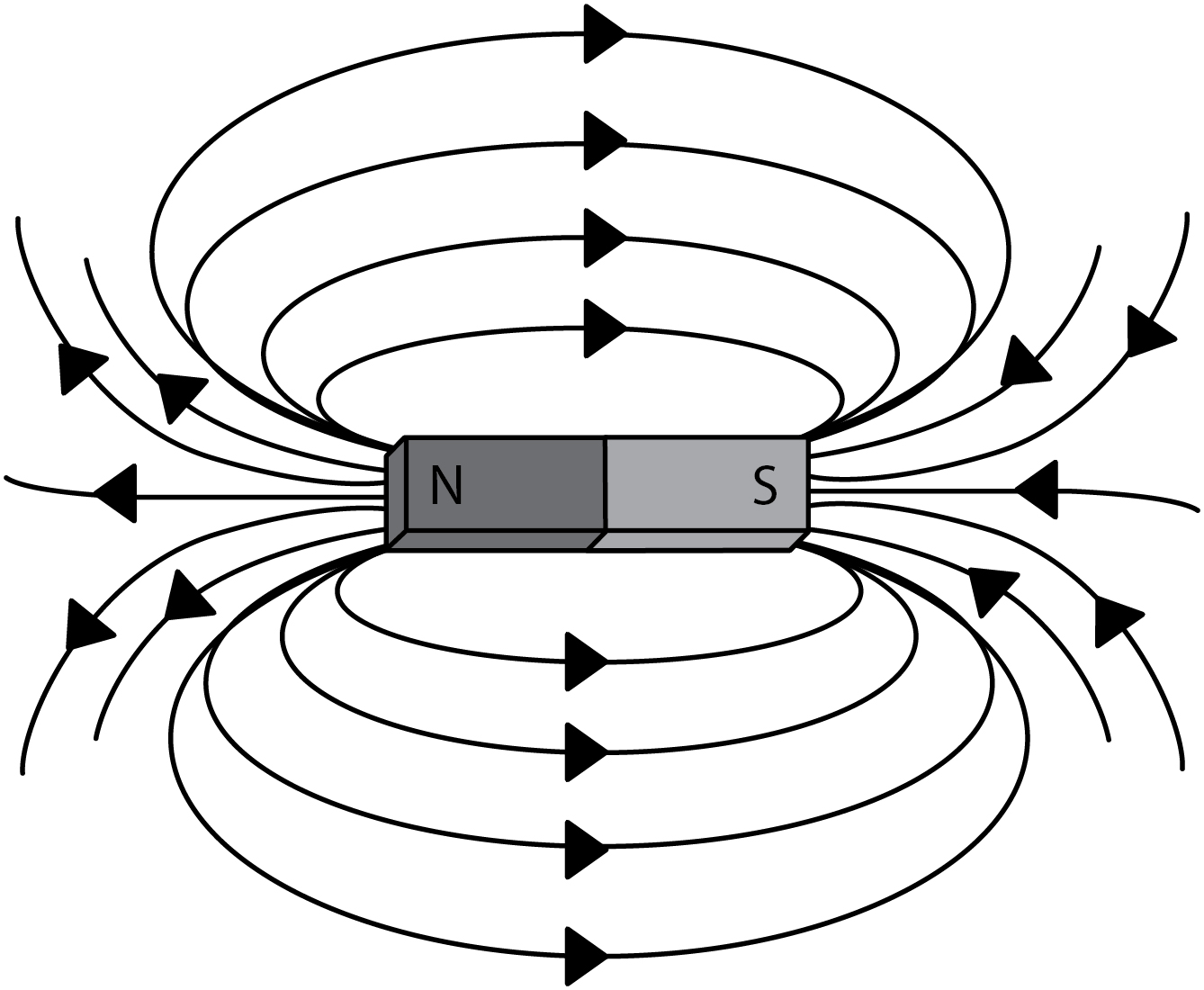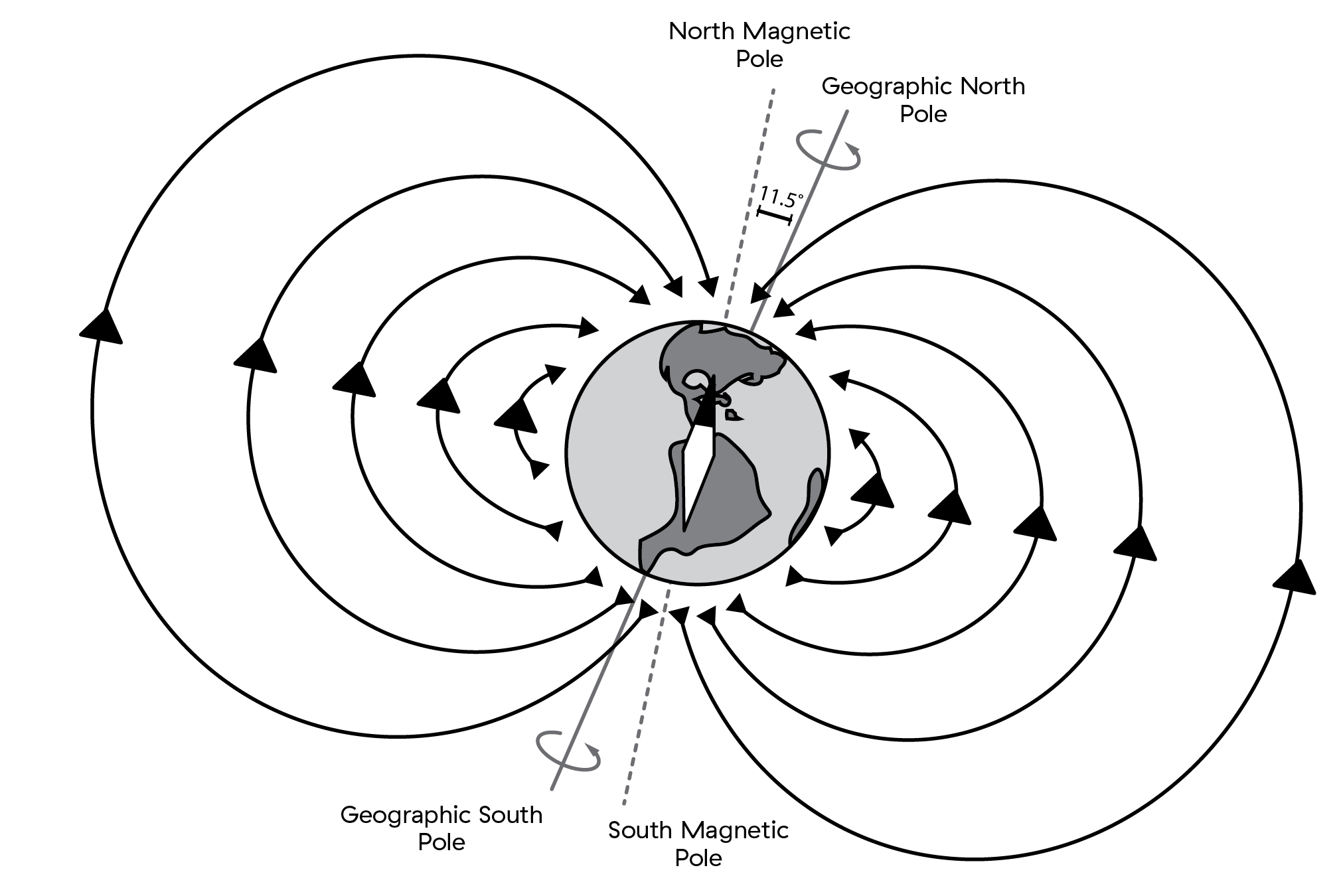
Overview
Using bar magnets and iron filings, you and your students can explore the properties of magnetic fields, just like the one that surrounds the Earth.
Instructions
What you'll need
Each group will need:
- A sheet of white paper
- Tape
- 1 bar magnet
- A compass
- Iron filings and a spoon
- "Find the magnetic field" worksheet for each student
- "Find the magnetic field" answer key
- "Magnetic fields competencies self-assessment" for each student
- A camera or a smartphone with a camera (optional)
Safety first
- Iron filings can damage bodies and should be kept away from eyes and mouths. Explain to the students that they should try not to touch the filings. Everyone must wash their hands at the end of the activity
- Magnets can damage electronic devices, so keep cameras, smartphones, and tablets at a distance
Explore with the magnets
- Put your students into groups of three or four. Have them talk with each other about magnetic fields. What do they know? Have each group share a few ideas with the class.
- Get the students to investigate what happens when the magnets and compasses are in close proximity. Ask the students to explore what the compass does if they move it up and down the length of the magnet.
- Challenge your students to predict the shape of the magnetic field that surrounds the magnets.
Find the magnetic field
- Remind the students to be safe when using iron filings and have them follow the following steps on their “Find the magnetic field” worksheet.
- Get students to tape a bar magnet to the centre of the piece of paper so it won’t move.

- Next they can flip the paper over so that the magnet is facing down.
- Have students carefully sprinkle some iron filings on the paper around the area of the magnet.

- They can gently shake the paper and observe what happens to the filings.
Document and debrief
- Your students should be recording their observations and answering questions on their “Find the magnetic field” worksheet.
- Inform students they can also take photos of the patterns created in the iron filings.
- Show the images of magnetic fields and have the groups share with the class whether their magnetic fields were similar or different.
- Have your students complete their self-assessment.
Modify or extend this activity
- Check out the "Build an electromagnet" activity to continue exploring electricity and magnetism.
- Try the activity again, but this time have students move the compass through the magnetic field and observe the reaction of the compass needle. Does it line up along the pattern in the filings?
- Students can make their own basic compass. Have them rub a needle against the bar magnet several times and then stick the needle through the top of a cork. When the cork is floated in the jar of water, the needle will orient itself with the Earth’s magnetic field.
- Experiment with how ceramic magnets affect the iron filings.
Curriculum Fit
Grade 7 Science
Content
- Electromagnetism
Curricular competencies
Questioning and predicting
- Demonstrate a sustained intellectual curiosity about a scientific topic or problem of personal interest
Planning and conducting
- Collaboratively plan a range of investigation types
Processing and analyzing data and information
- Use scientific understanding to identify relationships and draw conclusions
Communicating
- Communicate ideas, findings and solutions to problems
Grade 7 Applied Design, Skills, and Technologies
Content
- Power technology
- Forms of energy
- Devices that transform energy
Curricular competencies
Applied Design - Prototyping
- Identify a question to an answer or a problem to solve through scientific inquiry
Applied Design - Testing
- Gather peer and/or user and/or expert feedback and inspiration
- Make changes, troubleshoot, and test again
Assessments
- Observe students during the activity and notice their ability to:
- Successfully reveal a magnetic field.
- Make observations and record data.
- Identify questions about electromagnetism.
- Communicate ideas and findings using scientific language and representations.
- Work collaboratively as part of a small group.
- Use the "Find the magnetic field" answer key to review worksheet responses
- Students should complete the "Magnetic fields competencies self-assessment"
Teaching Notes
- Draw the magnetic field that surrounds a bar magnet and it appears as curved lines that move out from the north pole and return to the south pole.
- The magnetic field is strongest inside the magnet. Surrounding the magnet, the field is strongest near the poles.
- A magnetic north pole will attract the south pole of another magnet and repel a north pole.

- The Earth has a magnetic field that is created by an inner core of iron at the planet’s centre. Earth’s iron core is as hot as the Sun’s surface, but the immense gravitational pressure is why the core is in solid, not liquid, form.
- Surrounding the solid iron core is a 2,000 km thick layer of iron, nickel, and other metals. Because the pressure isn’t as intense, these metals are fluid. Convection currents form in this layer and the Earth’s spin also causes swirling movements in the molten metal. This flow of liquid iron generates electric currents, which in turn produce magnetic fields.

- Think of the Earth as having a gigantic bar magnet buried inside, creating north and south poles. The magnetic field extends far out into space, shielding our planet from the solar wind. The interactions between Earth’s magnetic field and these charged particles coming from the Sun cause the Aurora Borealis or Northern Lights.
- The needle of a compass is a tiny magnet. It is affected by the Earth’s magnetic field and lines up in a north-south orientation. The red side of the needle always points to the Earth’s magnetic north pole. The first navigation compasses were designed according to the same principle: a chunk of lodestone would be tied to a piece of wood and floated in water.
- This imaginary bar magnet that is in the Earth does not run exactly north/south. It is “positioned” slightly off the Earth’s axis, which is why our magnetic North Pole is in a different location than the geographic North Pole.






